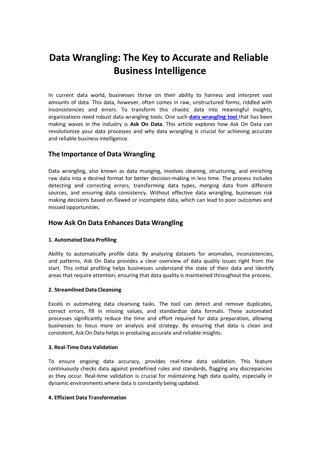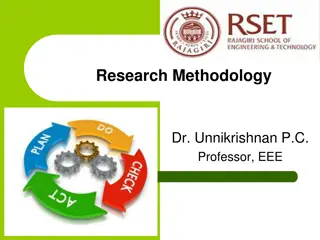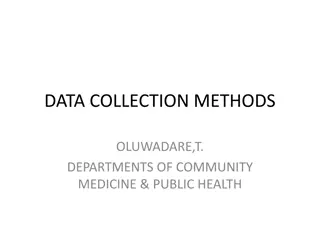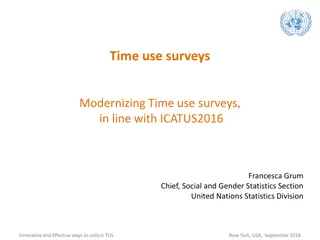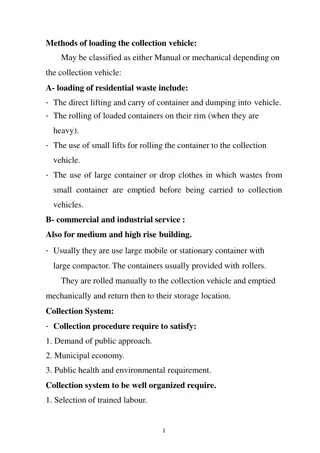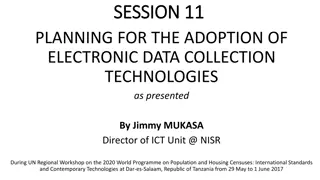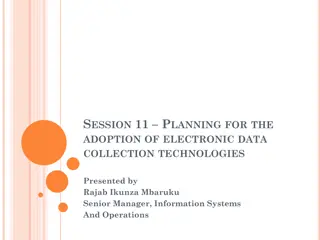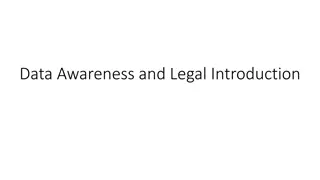Data Collection Methods for Business Analysis
Data collection is essential for analyzing business performance and making informed decisions. Various data collection methods like primary and secondary data collection help evaluate outcomes and draw conclusions. Primary data includes raw information obtained firsthand, while quantitative methods involve mathematical calculations and qualitative methods focus on gathering non-numerical data. Effective data collection plays a crucial role in business processes and research procedures.
Download Presentation

Please find below an Image/Link to download the presentation.
The content on the website is provided AS IS for your information and personal use only. It may not be sold, licensed, or shared on other websites without obtaining consent from the author.If you encounter any issues during the download, it is possible that the publisher has removed the file from their server.
You are allowed to download the files provided on this website for personal or commercial use, subject to the condition that they are used lawfully. All files are the property of their respective owners.
The content on the website is provided AS IS for your information and personal use only. It may not be sold, licensed, or shared on other websites without obtaining consent from the author.
E N D
Presentation Transcript
Data Collection Methods To Analyze And Make Decisions About A Certain Business, Sales, Etc., Data Will Be Collected. This Collected Data Will Help In Making Some Conclusions About The Performance Of A Particular Business. Thus, Data Collection Is Essential To Analyze The Performance Of A Business Unit, Solving A Problem And Making Assumptions About Specific Things When Required. Before Going Into The Methods Of Data Collection, Let Us Understand What Data Collection Is And How It Helps In Various Fields.
What is Data Collection? In Statistics, data collection is a process of gathering information from all the relevant sources to find a solution to the research problem. It helps to evaluate the outcome of the problem. The data collection methods allow a person to conclude an answer to the relevant question. Most of the organizations use data collection methods to make probabilities and trends. Once the data is collected, it is necessary to undergo the data organization process assumptions about future
The main sources of the data collections methods are Data. Data can be classified into two types, namely primary data and secondary data. The primary importance of data collection in any research or business process is that it helps to determine many important things about the company, particularly the performance. So, the data collection process plays an important role in all the streams. Depending on the type of data, the data collection method is divided into two categories namely,
TYPES OF DATA COLLECTION METHOD Primary Data Collection method Secondary Data Collection method
Primary Primary Data Primary data or raw data is a type of information that is obtained directly from the first-hand source through experiments, surveys or observations. The primary data collection method is further classified into two types. They are Data Collection Collection Methods Methods Quantitative Data Collection Methods Qualitative Data Collection Methods
Quantitative Quantitative Data It is based on mathematical calculations using various formats like close-ended questions, correlation and regression methods, mean, median or mode measures. This method is cheaper than qualitative data collection methods and it can be applied in a short duration of time. Data Collection Collection Methods Methods
Qualitative Qualitative Data It does not involve any mathematical calculations. This method is closely associated with elements that are not quantifiable. This qualitative data collection method includes interviews, questionnaires, observations, case studies, etc. Data Collection Collection Methods Methods
There are several methods to collect this type of data. They are Observation Method Observation Method Observation method is used when the study relates to behavioural science. This method is planned systematically. It is subject to many controls and checks. The different types of observations are: Structured and unstructured observation Controlled and uncontrolled observation Participant, non-participant and disguised observation
Interview Interview Method Method The method of collecting data in terms of verbal responses. It is achieved in two ways, such as Personal Interview In this method, a person known as an interviewer is required to ask questions face to face to the other person. The personal interview can be structured or unstructured, direct investigation, focused conversation, etc. Telephonic Interview In this method, an interviewer obtains information by contacting people on the telephone to ask the questions or views, verbally
Questionnaire Questionnaire Method In this method, the set of questions are mailed to the respondent. They should read, reply and subsequently return the questionnaire. The questions are printed in the definite order on the form.Agood survey should have the following features: Method Short and simple Should follow a logical sequence Provide adequate space for answers Avoid technical terms Should have good physical appearance such as colour, quality of the paper to attract the attention of the respondent
Schedules Schedules This method is similar to the questionnaire method with a slight difference. The enumerations are specially appointed for the purpose of filling the schedules. It explains the aims and objects of the investigation and may remove misunderstandings, if any have come up. Enumerators should be trained to perform their job with hard work and patience
Secondary Secondary Data Data Collection Collection Methods Methods Secondary data is data collected by someone other than the actual user. It means that the information is already available, and someone analyses it. The secondary data includes magazines, newspapers, books, journals, etc. It may be either published data or unpublished data.
Published data are available in various resources including Government publications Public records Historical and statistical documents Business documents Technical and trade journals Unpublished data includes Diaries Letters Unpublished biographies, etc.



